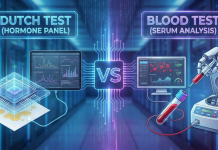In the warehousing and distribution industry, the only constant is change.
Warehouse operators, supply chain experts, and technology providers are always searching for new ways to remove inefficiencies from every step in the supply chain, from the moment a finished product leaves a manufacturing facility until it arrives at a consumer or business’ doorstep.
While it’s hard to say where the world of 3PL will be 10 years from now, here are a few current trends worth keeping your eye on.
1. 3PL Providers are Focused on Sustainability
Companies worldwide have reached an understanding that sustainability can be a win-win. Both their business and the world benefit when companies are mindful of their environmental footprint.
3PL companies are no exception. Many providers are embracing a range of environmentally-friendly warehousing practices, such as:
- Installing lighting that automatically shuts off when not in use.
- Optimizing their facility layout to preserve space and cut down on energy use.
- Actively monitoring KPIs related to sustainability, including carbon emissions and waste reductions.
These measures are helping to protect the planet while reducing costs for customers.
2. Cross-Docking Is Helping Companies Cut Down on Storage Costs

Sometimes, items need to get from a shipping container to a customer’s doorstep fast. During those occasions, cross-docking 3PL services can be a lifesaver.
It’s a simple process. A truck arrives with goods at the intake bay of a warehouse facility. From there, the warehouse staff removes the items and transports them to an outbound truck on the opposite side of the facility so they can be quickly shipped out to customers. It’s a commonly used practice for businesses whose inventory sells quickly.
Modern warehouse design is making it easier than ever to deliver efficient cross-docking services. Many warehousing providers use software that provides layout recommendations based on their needs. Warehouse teams that regularly use cross-docking can have their facilities arranged in a way that minimizes obstructions between the intake and outtake bay.
Cross-docking enables companies to ship items to their customers in a shorter amount of time while reducing storage costs since pallets are never actually stored on-site.
3. Warehouses Technology is Becoming Interconnected
In the modern world of supply chain logistics, nearly every item shipped is represented by a data point in different software systems. Until recently, those systems didn’t necessarily talk with one another.
Today, that’s changing. Warehouse management systems (WMS), eCommerce platform, sensors and other Internet of Things (IoT) devices are now connected, and data flows through each of them. Now, when a customer places an order on an eCommerce site, the team at the warehouse immediately receives their order and can begin processing it.
This interconnectedness benefits companies in several ways. For one, they can now get visibility into their inventory levels at a moment’s notice. They can also access the type of in-depth reporting they need to make key strategic decisions for their business.
It has been said that in the modern world, data is as valuable as oil. 3PL providers and their clients would certainly agree.
4. Wearable Devices Are Streamlining the Pick and Pack Process
Repetitive processes such as picking items off of shelves and packing into boxes can account for up to 70 percent of a 3PL warehousing provider’s operating costs. Fortunately, wearable devices are beginning to cut down on these inefficiencies.
There’s a wide variety of wearable devices available for the modern warehouse staff, including smart glasses, smart watches, and barcode scanners. These devices help warehouse teammates locate items faster, cut down on mistakes, and reduce the amount of time it takes for newly-hired warehouse employees to complete their onboarding.
Most importantly, wearable devices are promoting worker safety. Ergonomic sensors, for example, can alert employees when they move their body in an unsafe way while on a shift. In an industry in which workplace injuries are, unfortunately, relatively common, these wearable devices are a welcome relief.
5. AI Is Making Improving Decision Making
Artificial intelligence is arguably the technology of the 2020’s. Its impact has been felt across seemingly every industry–the distribution and warehousing industries included.
While there are a number of AI use cases within the industry, the most prominent one is predicting demand. Until recently, forecasting spikes and drops in demand required some level of expertise in data science. AI has changed that. Modern WMS uses AI to analyze millions of data points every second, including historic sales data and recent sales activity. It can use this data to make highly-accurate predictions about when spikes are about to occur.
By improving demand forecasting, companies can feel confident that they will always have enough inventory in storage to meet the needs of their customers while avoiding taking on excess storage costs.
The Future is Now in 3PL
Before partnering with any 3PL vendor, be sure to ask them how they’re keeping up with the latest trends in the field. When you partner with a future-focused 3PL provider, you can feel confident you’re getting the most out of your investment.






